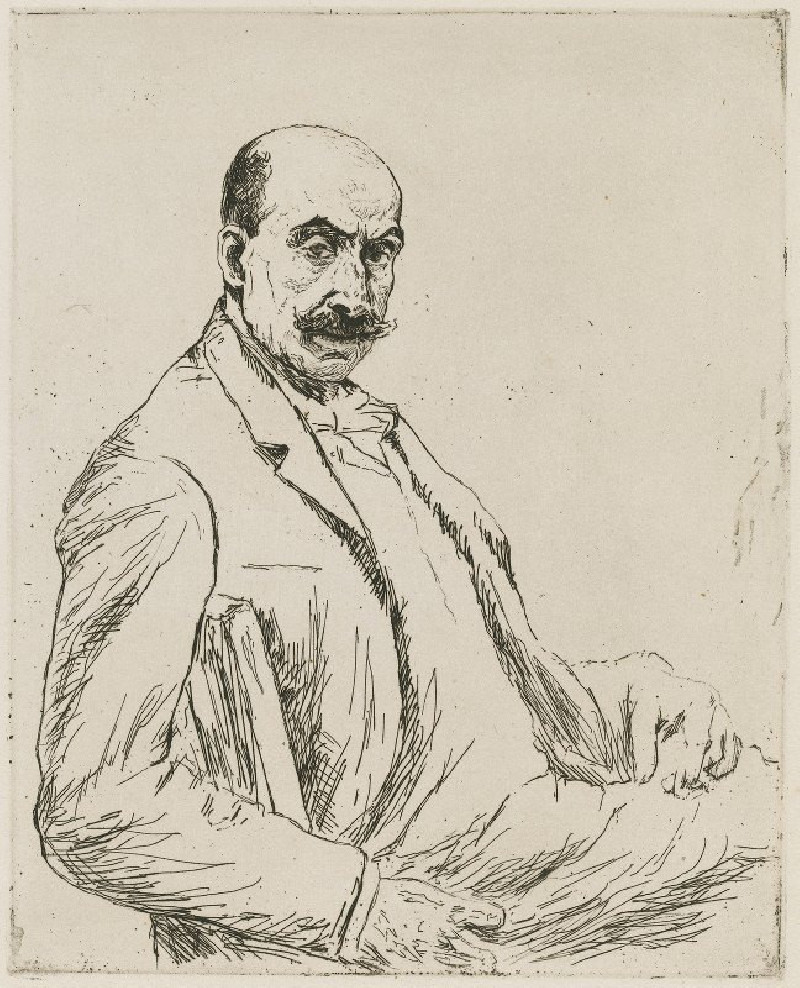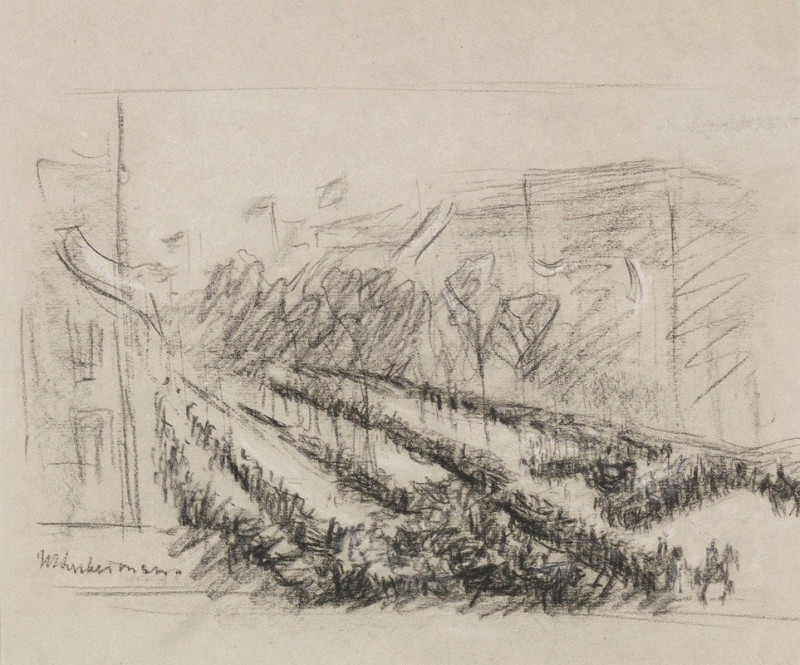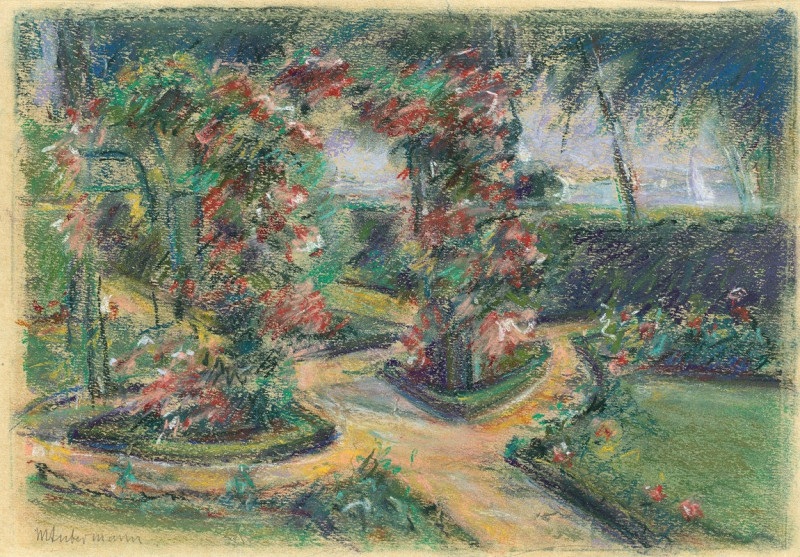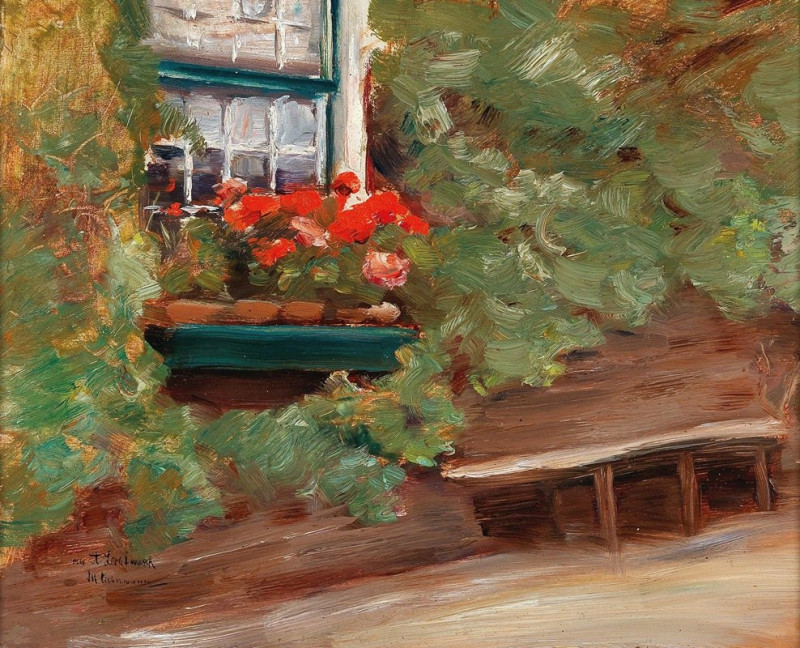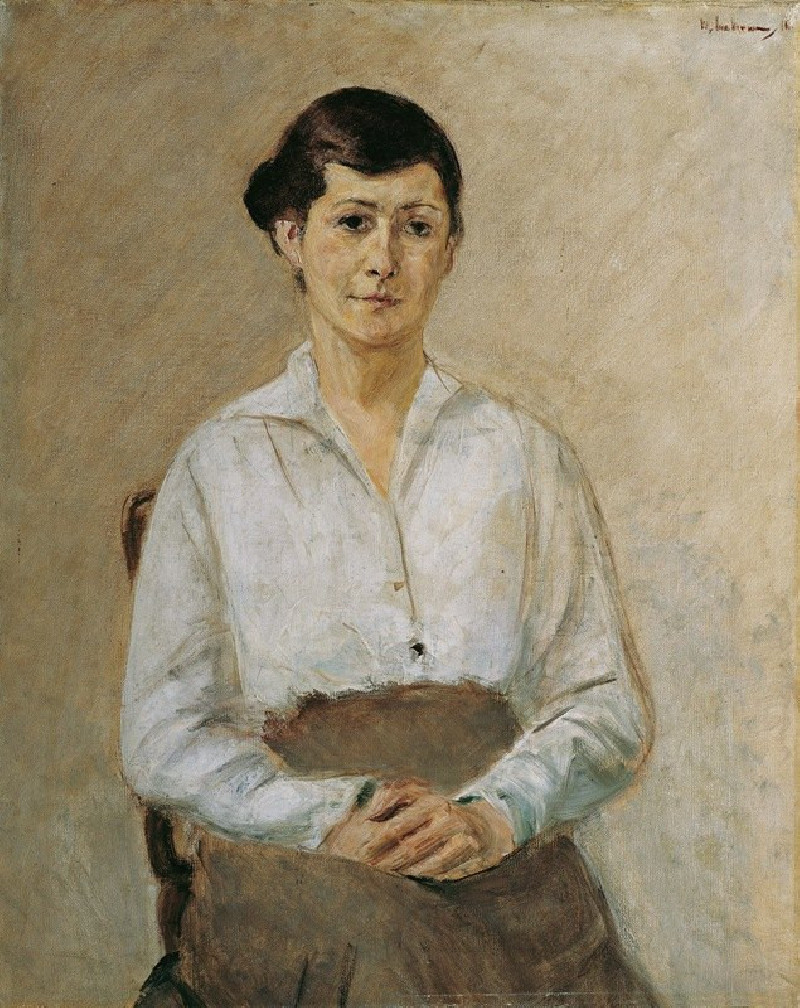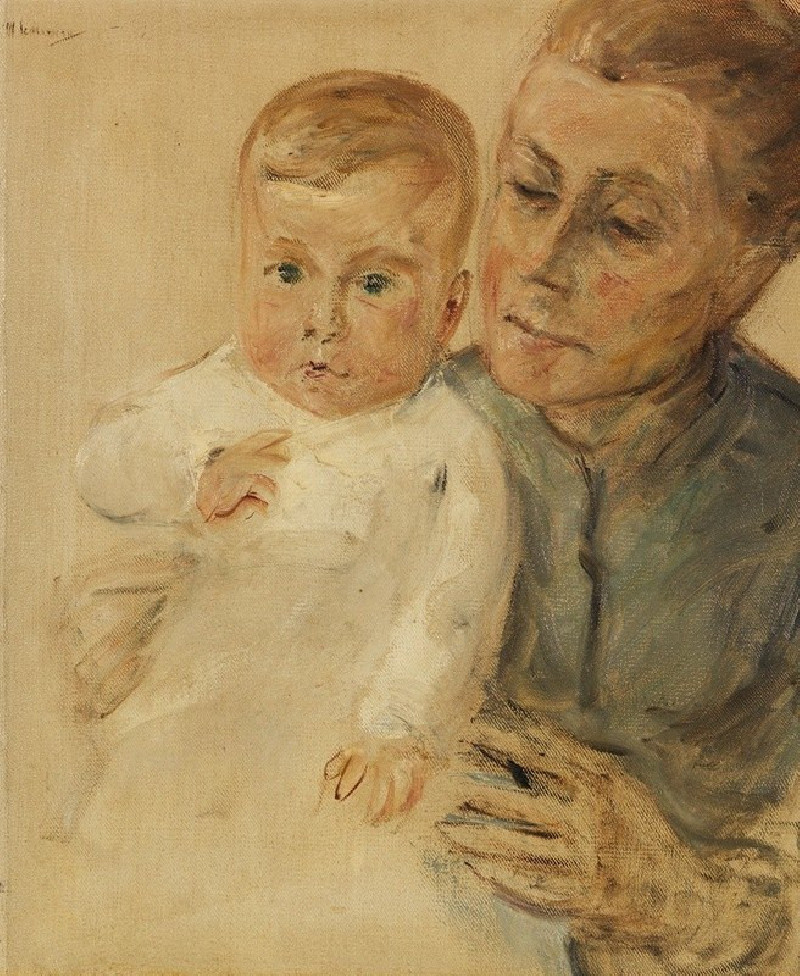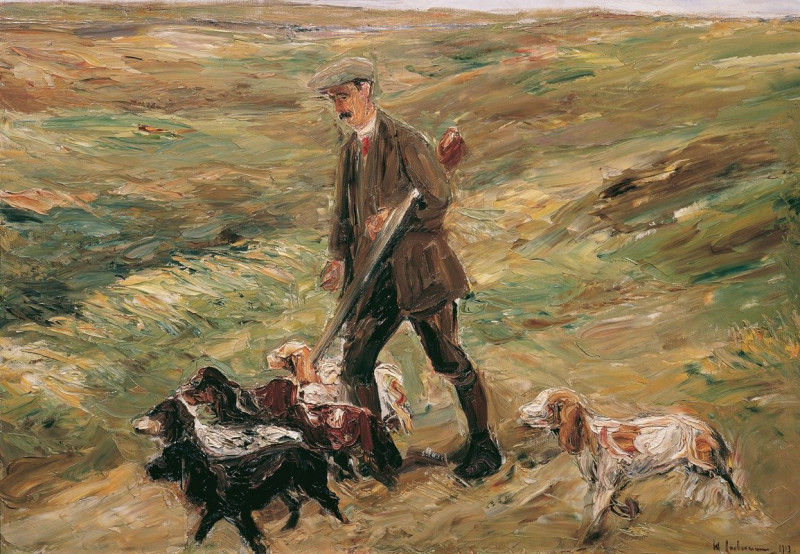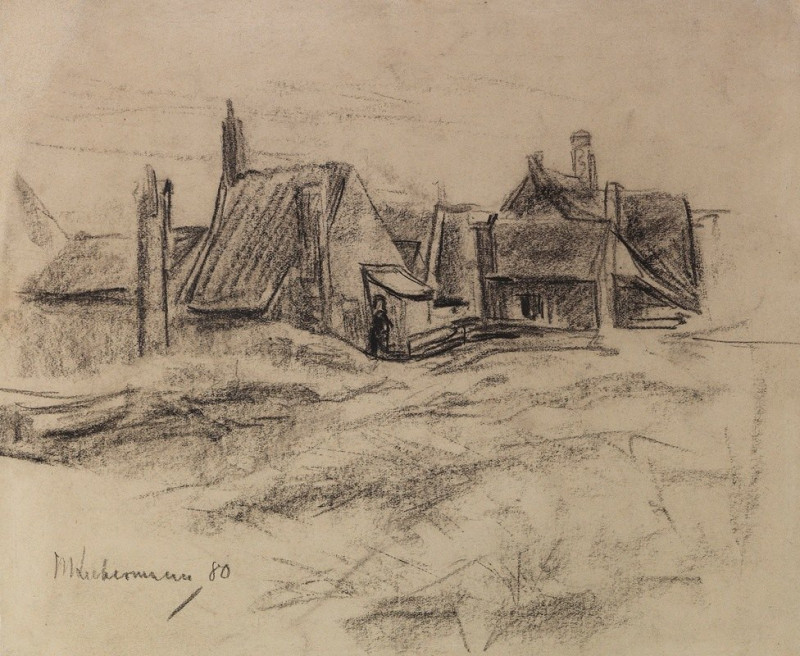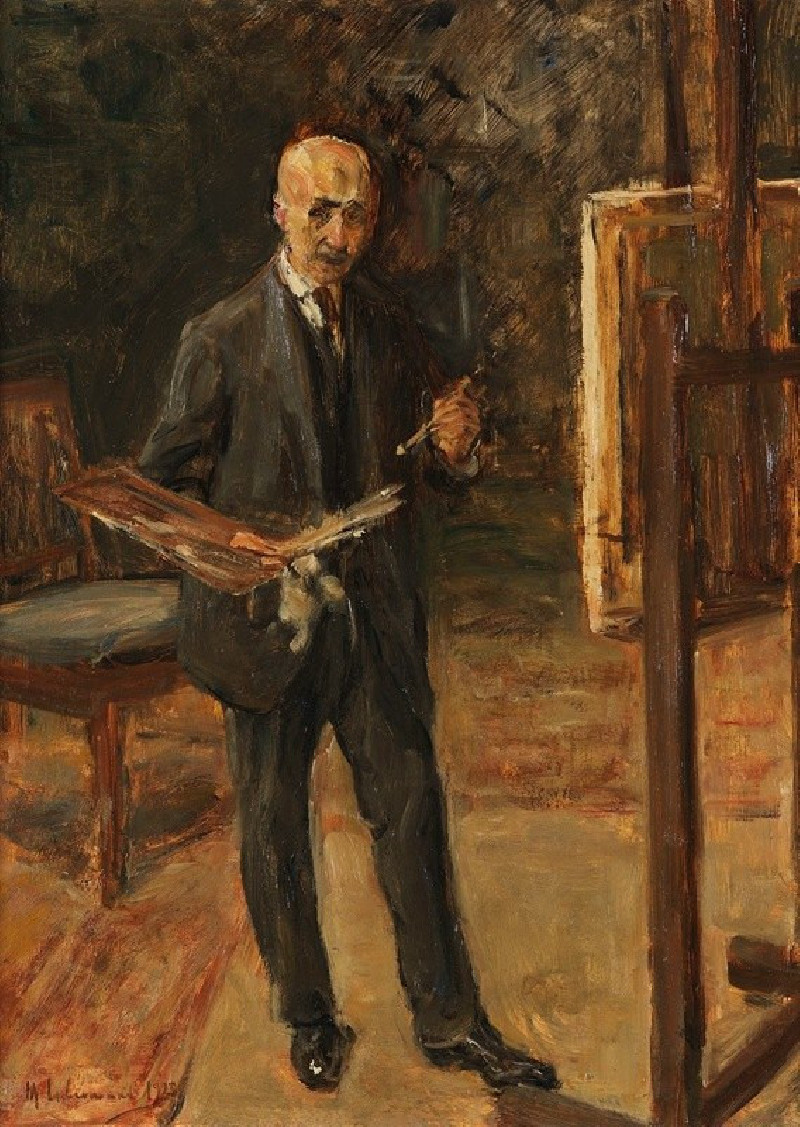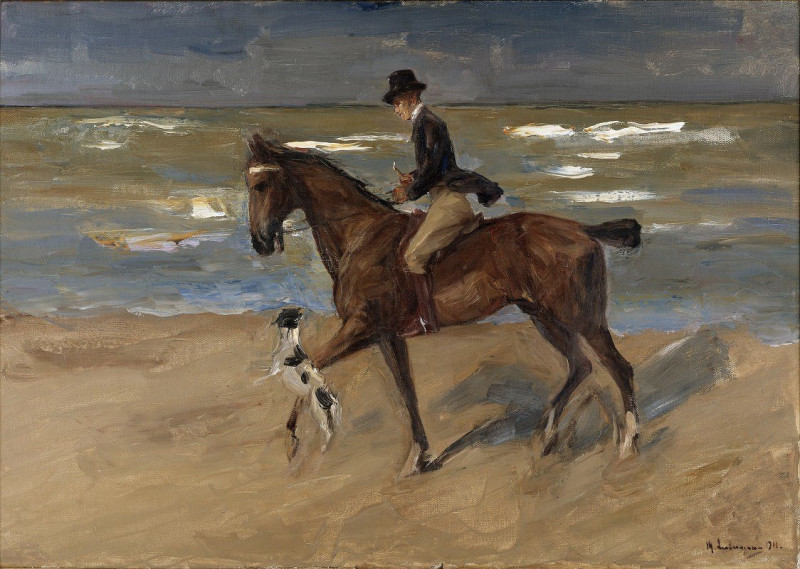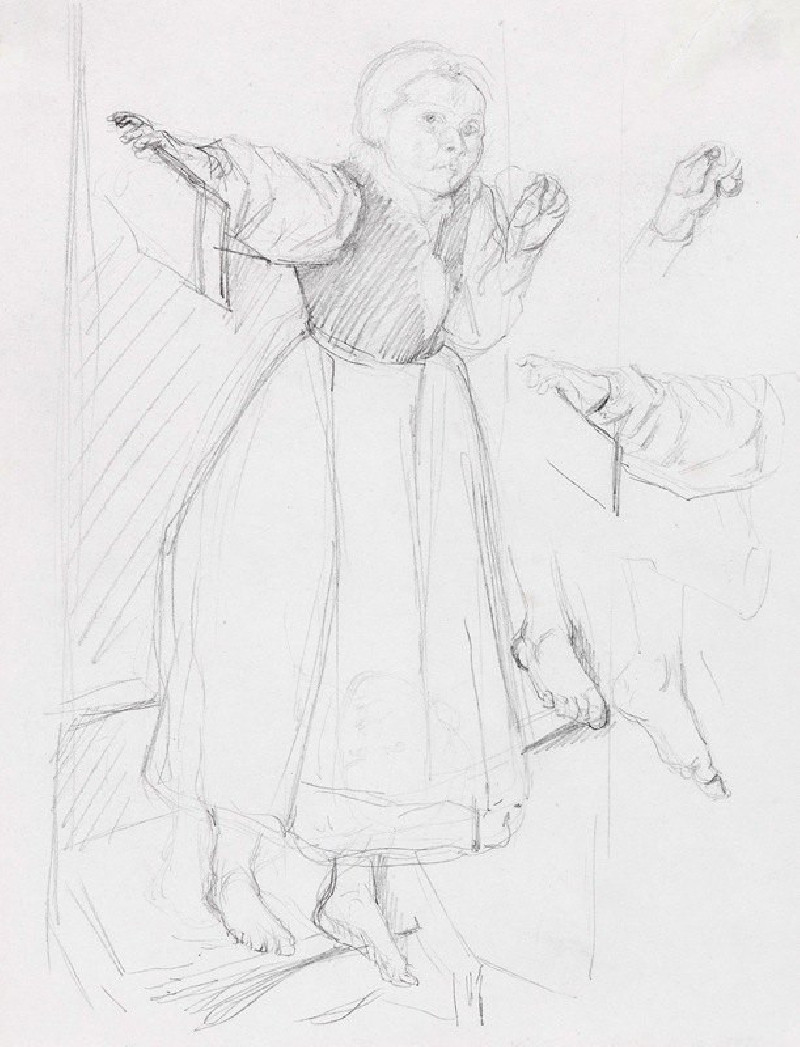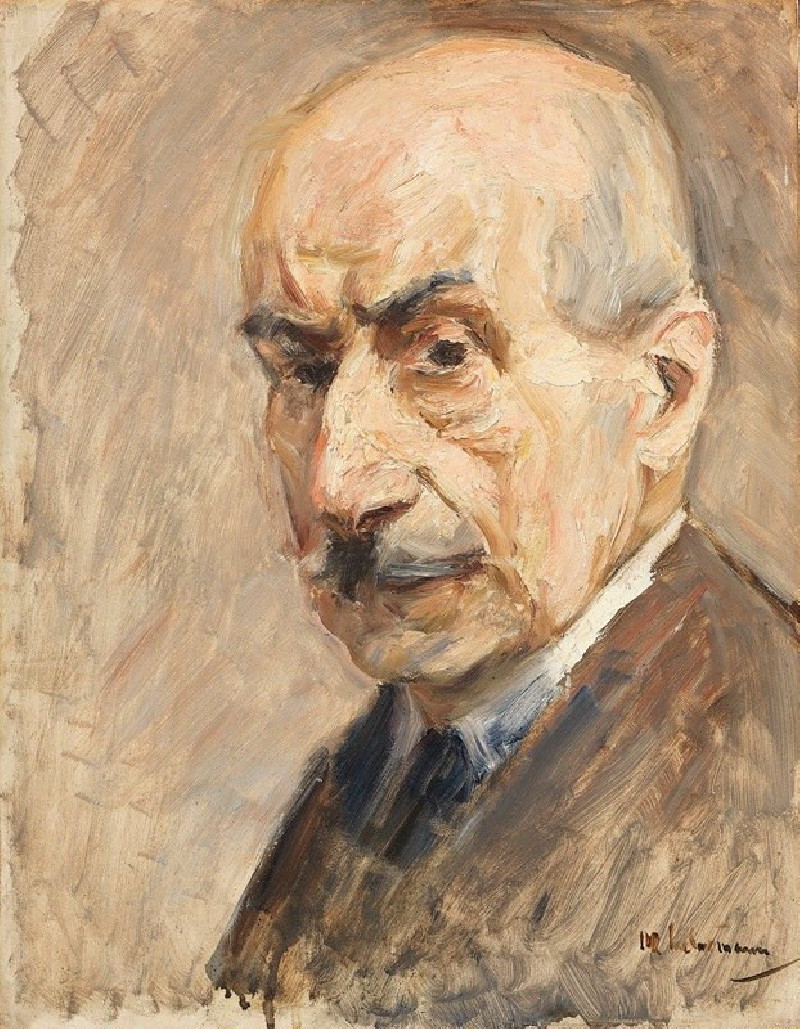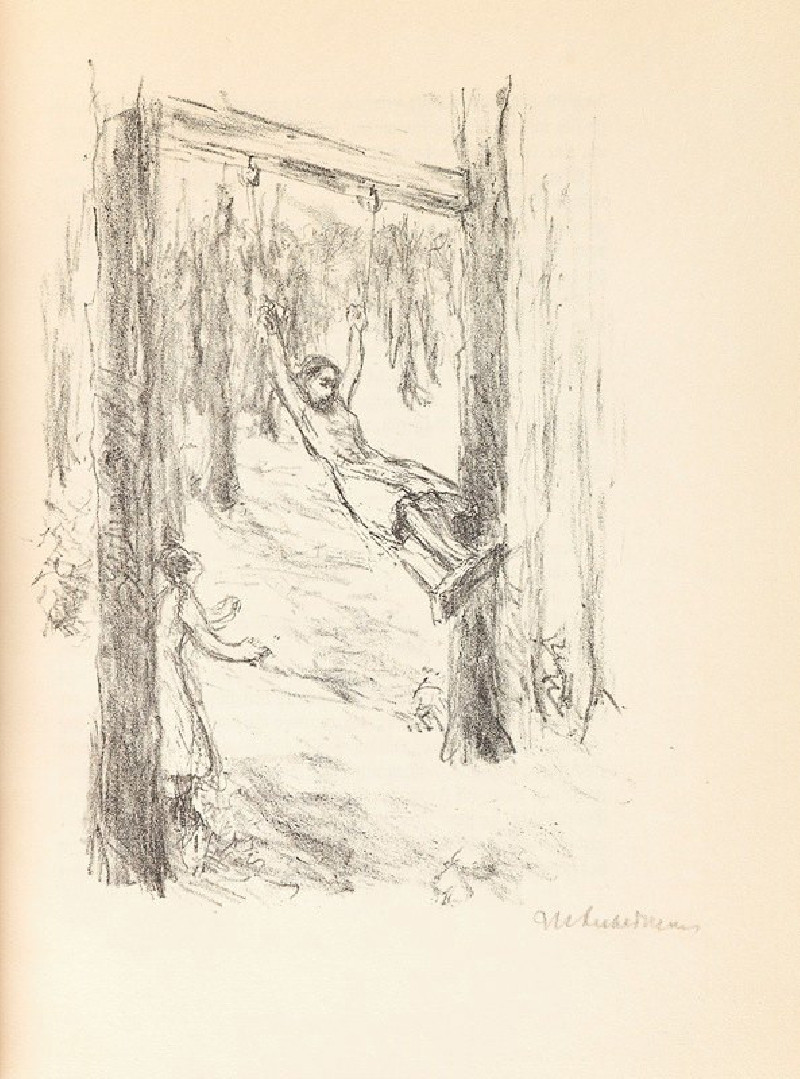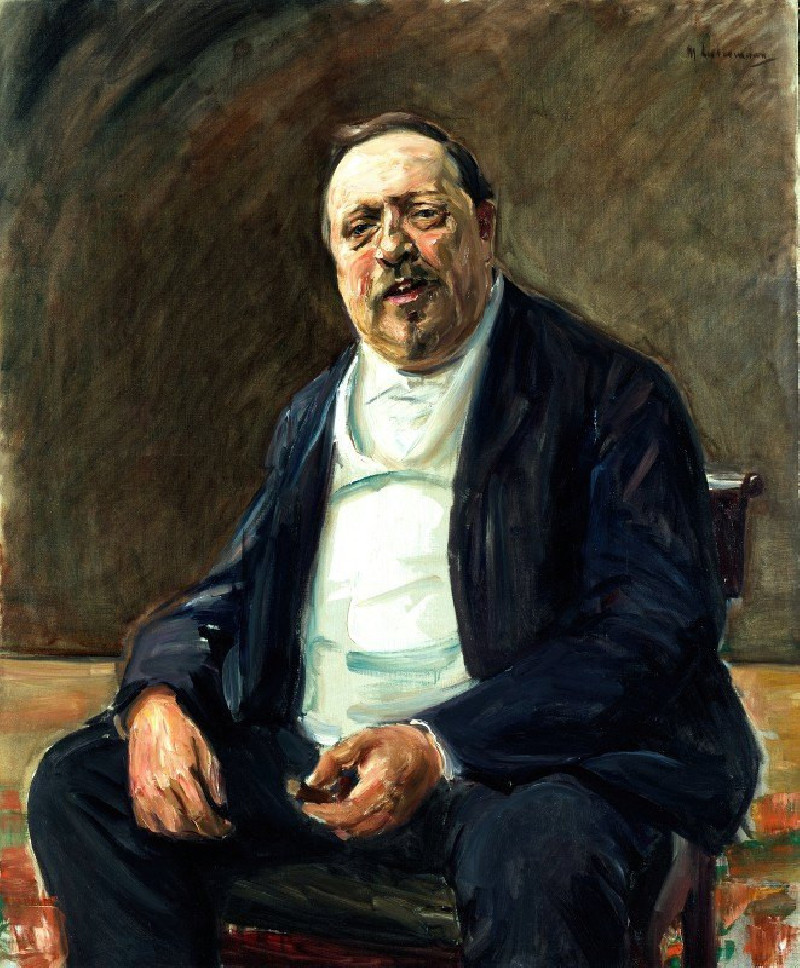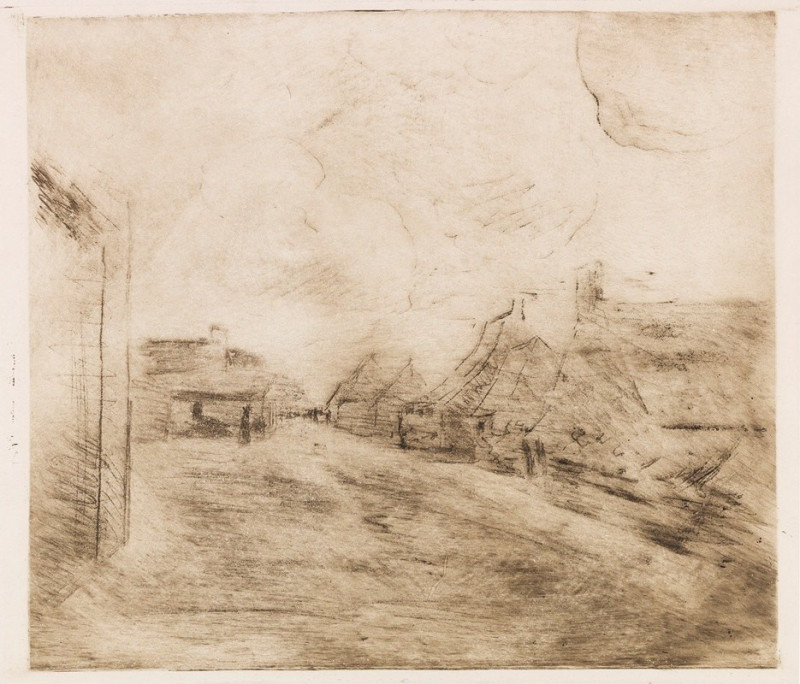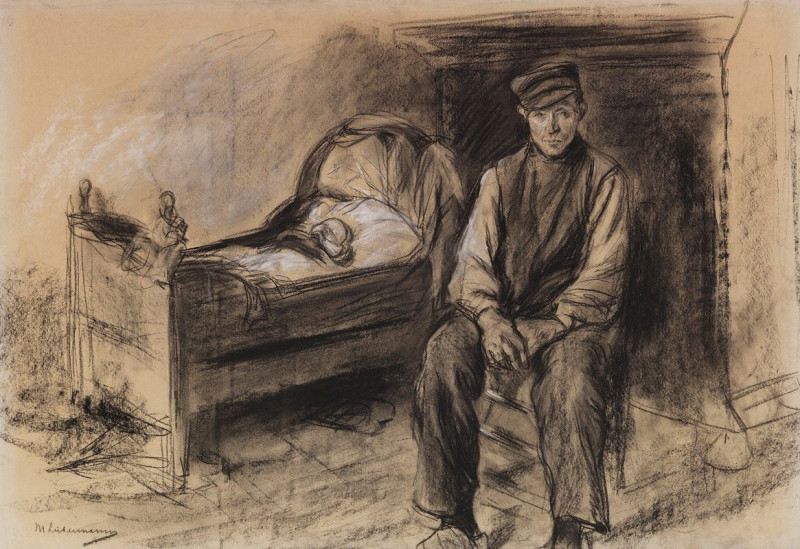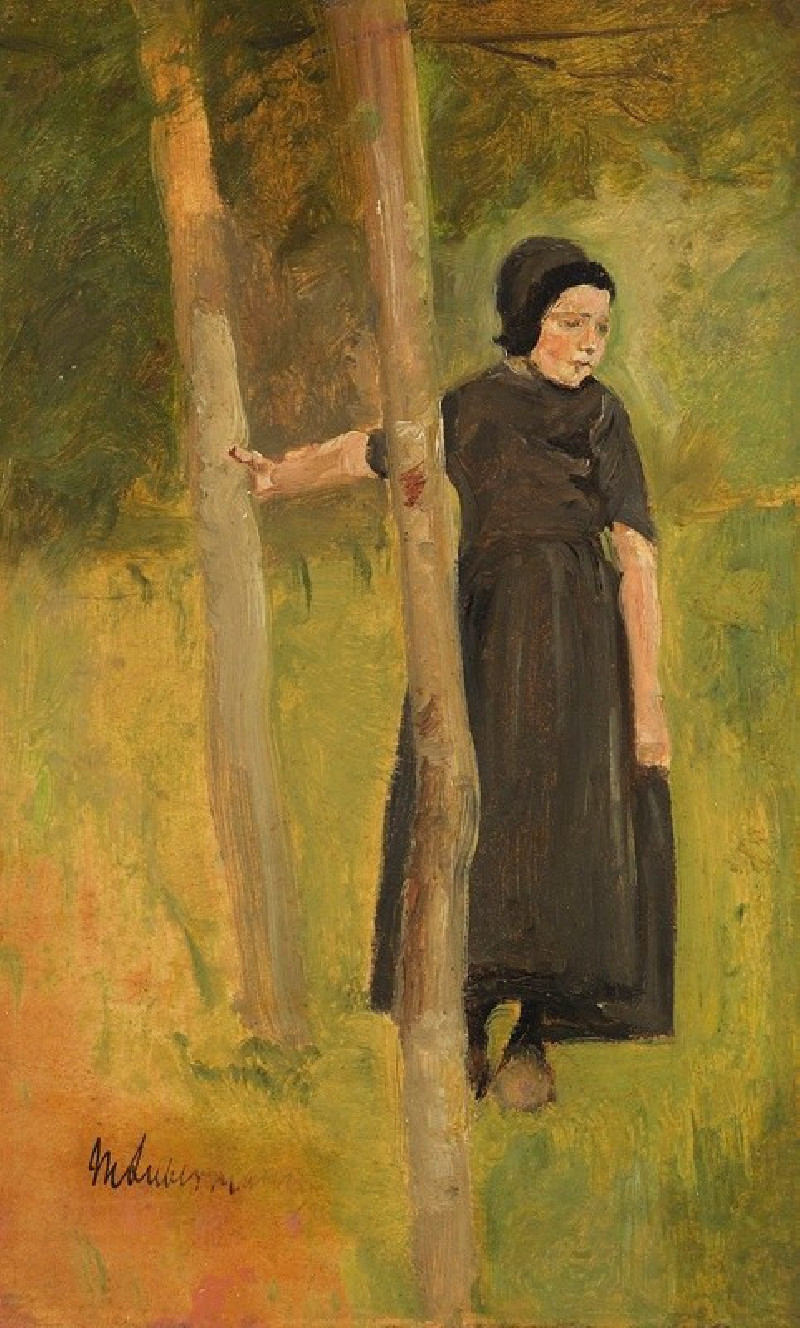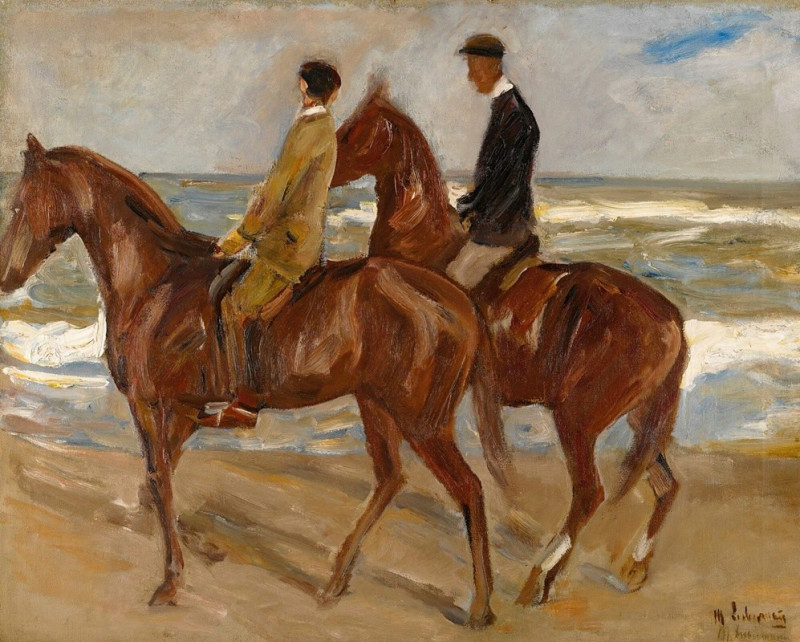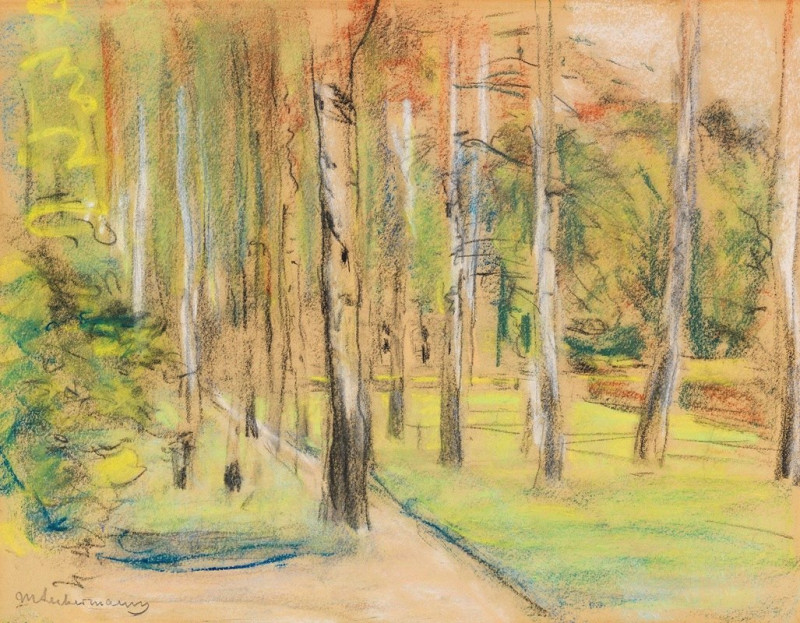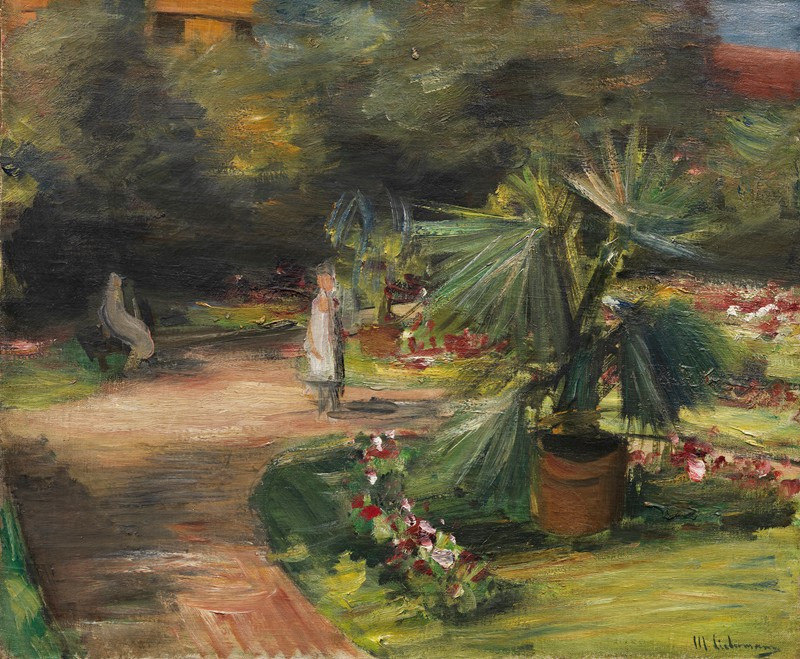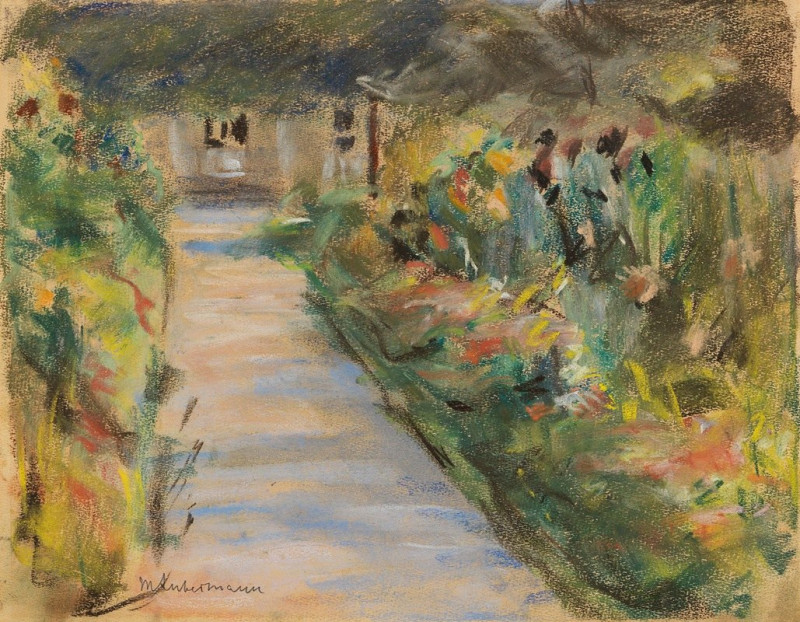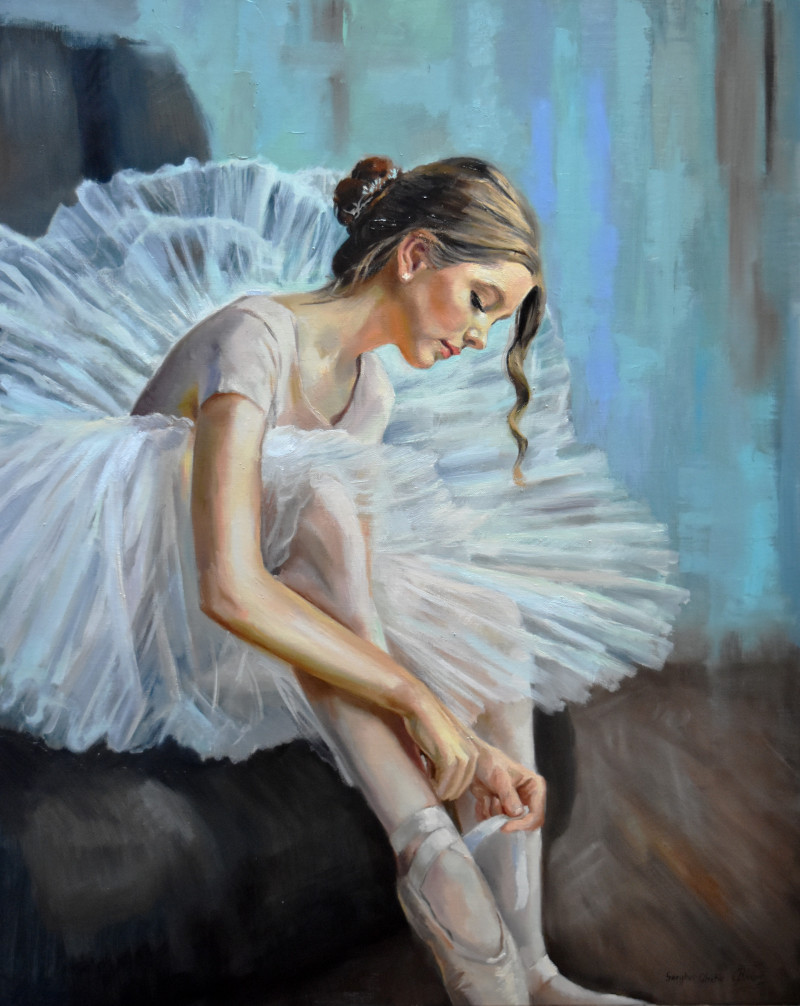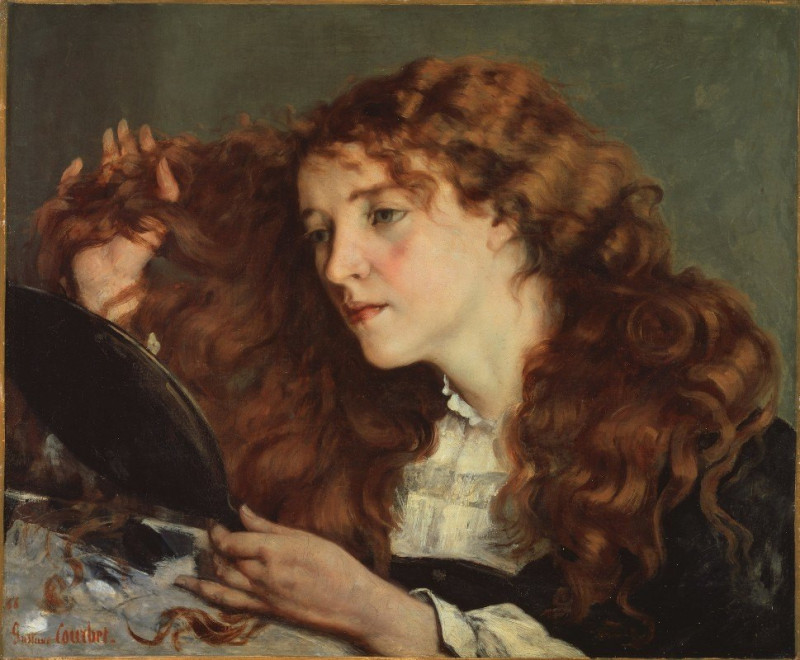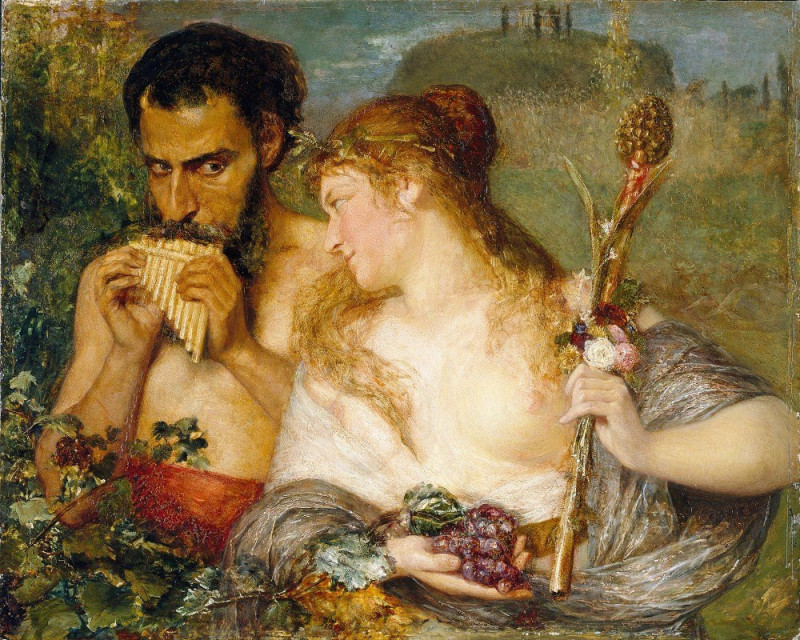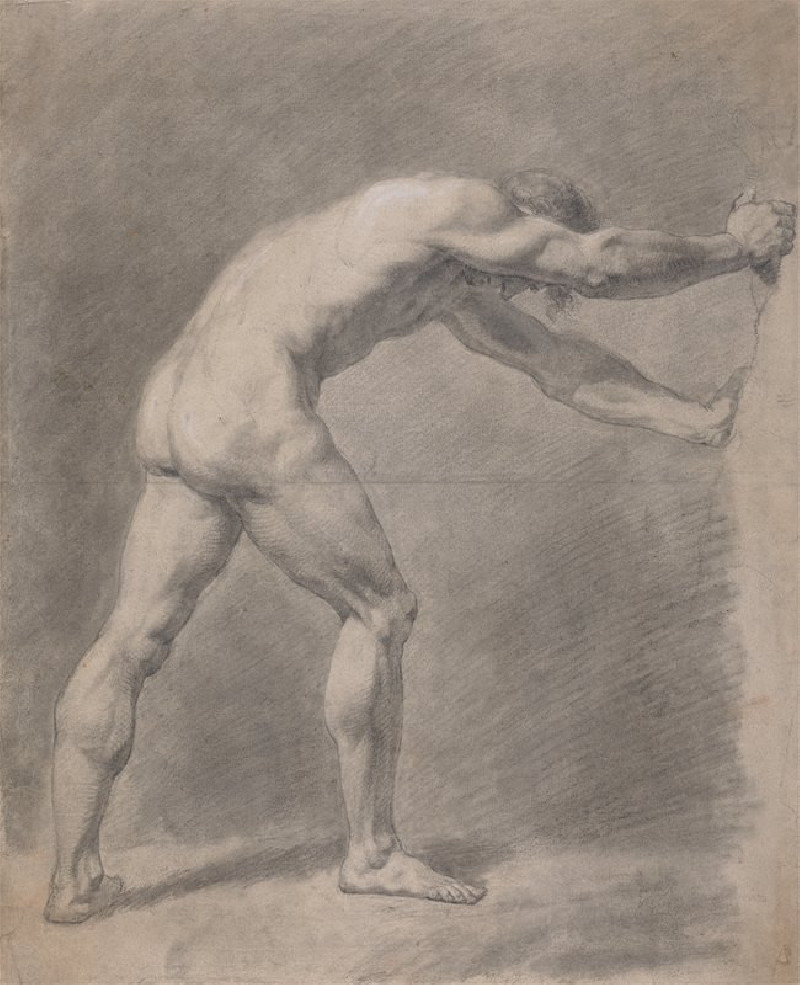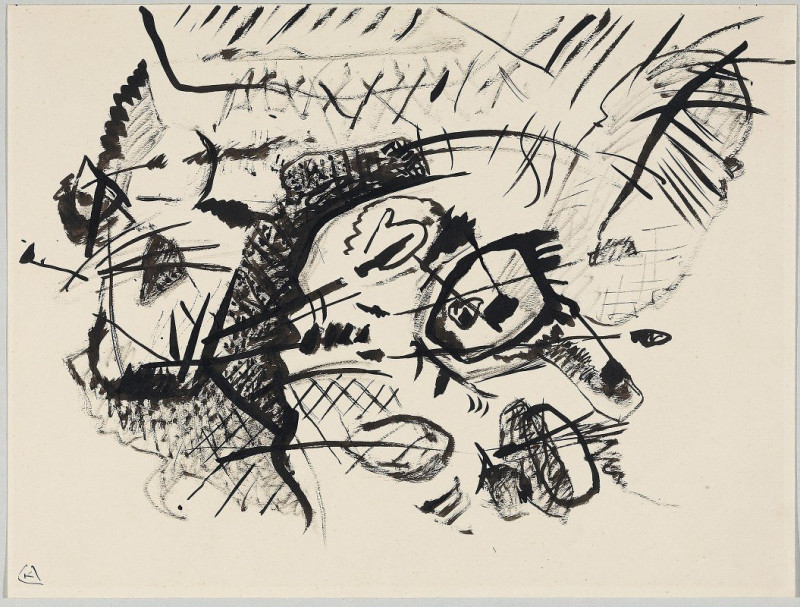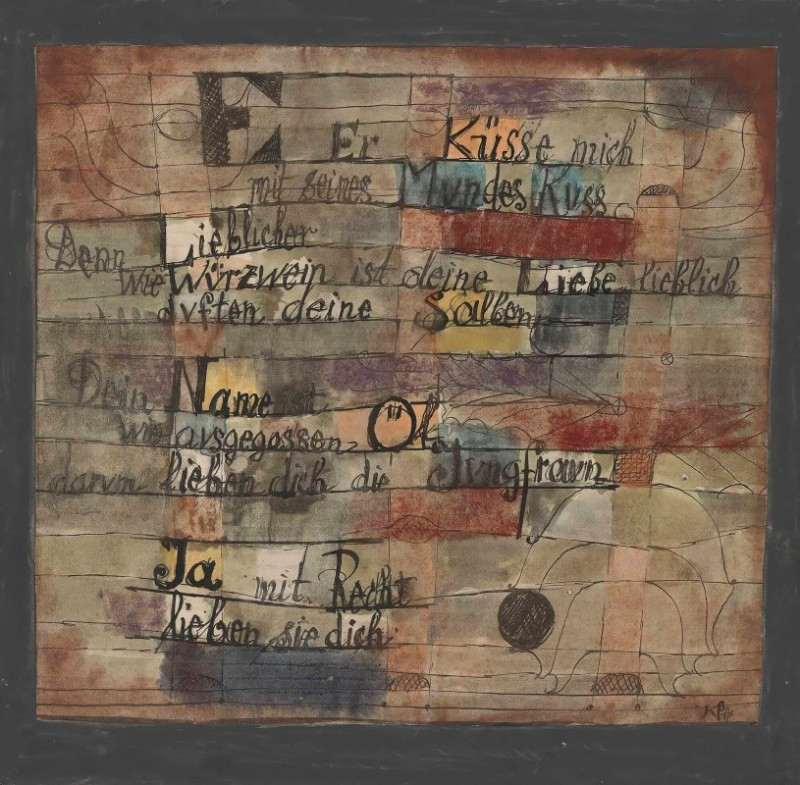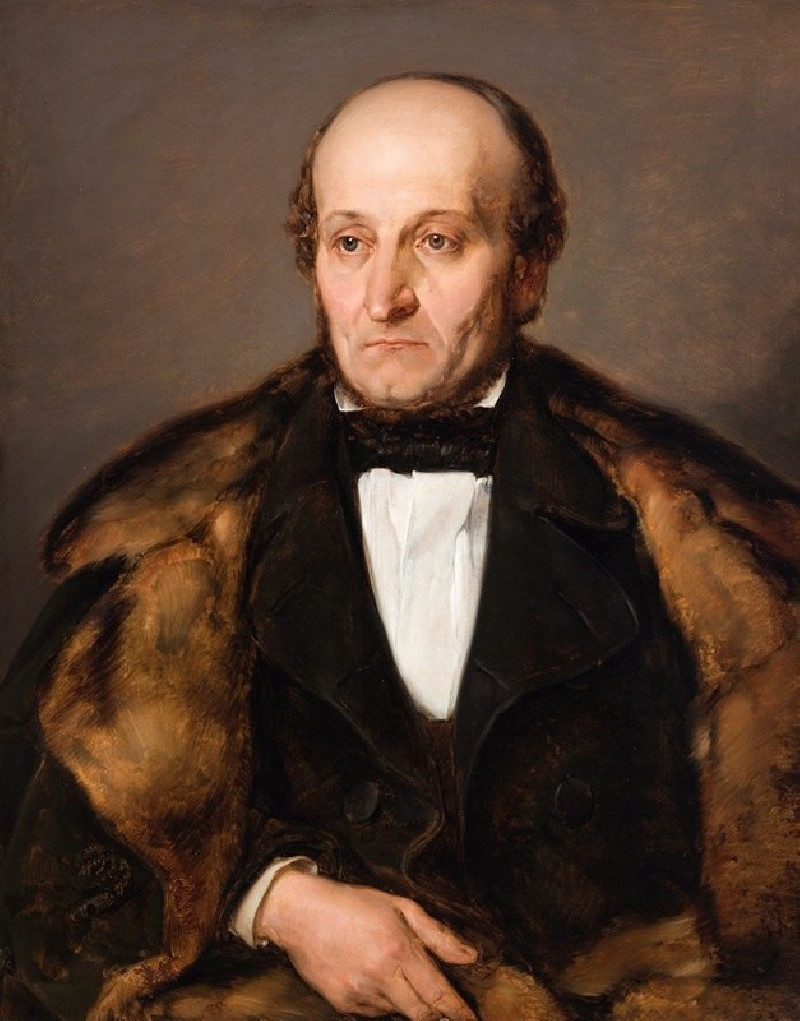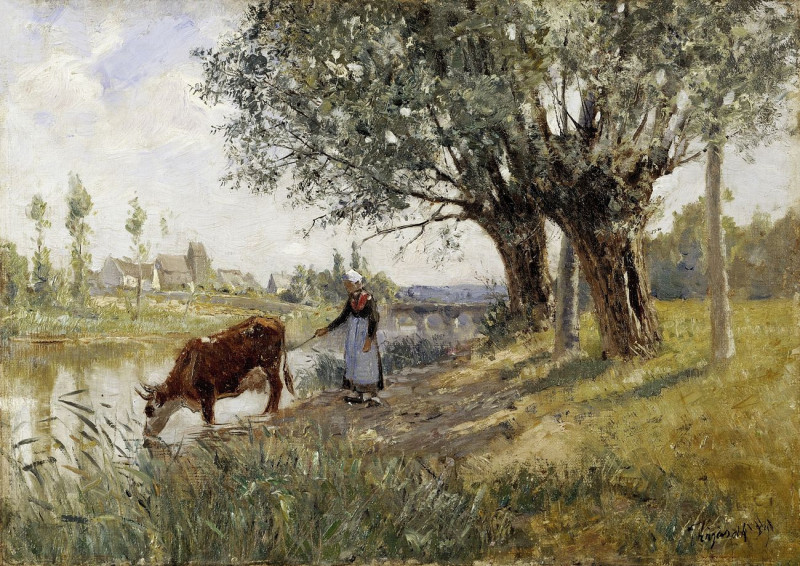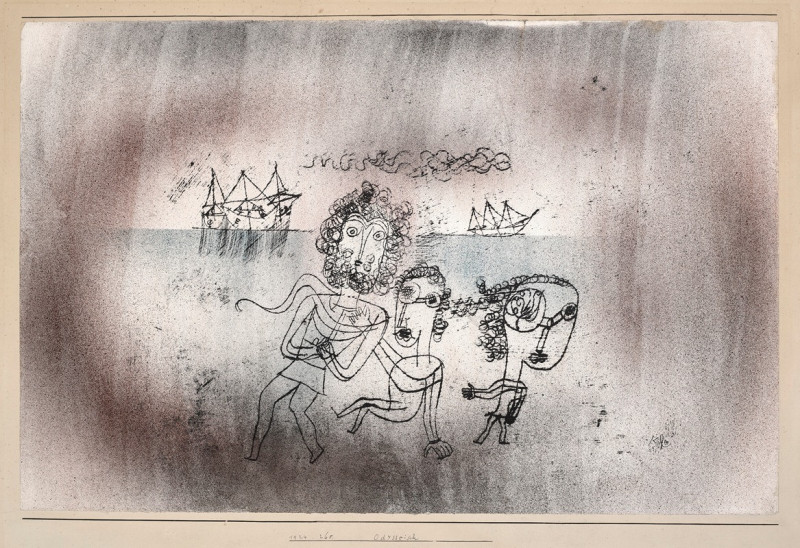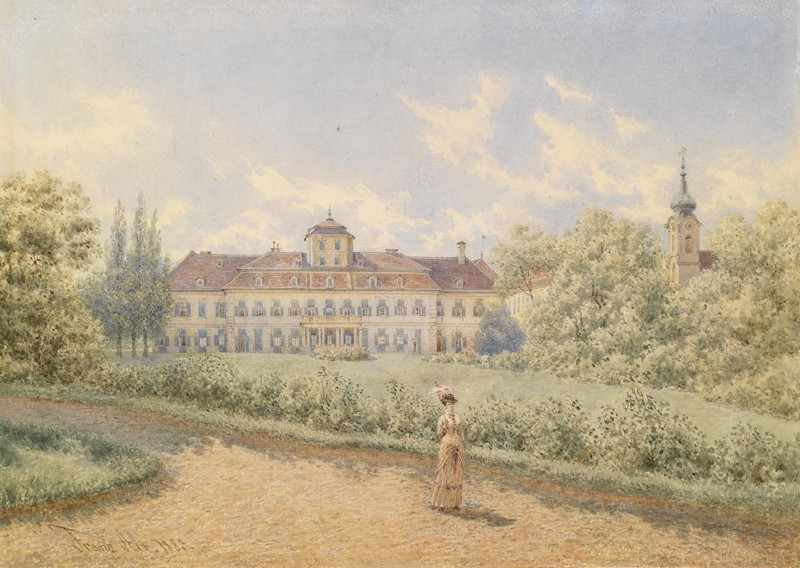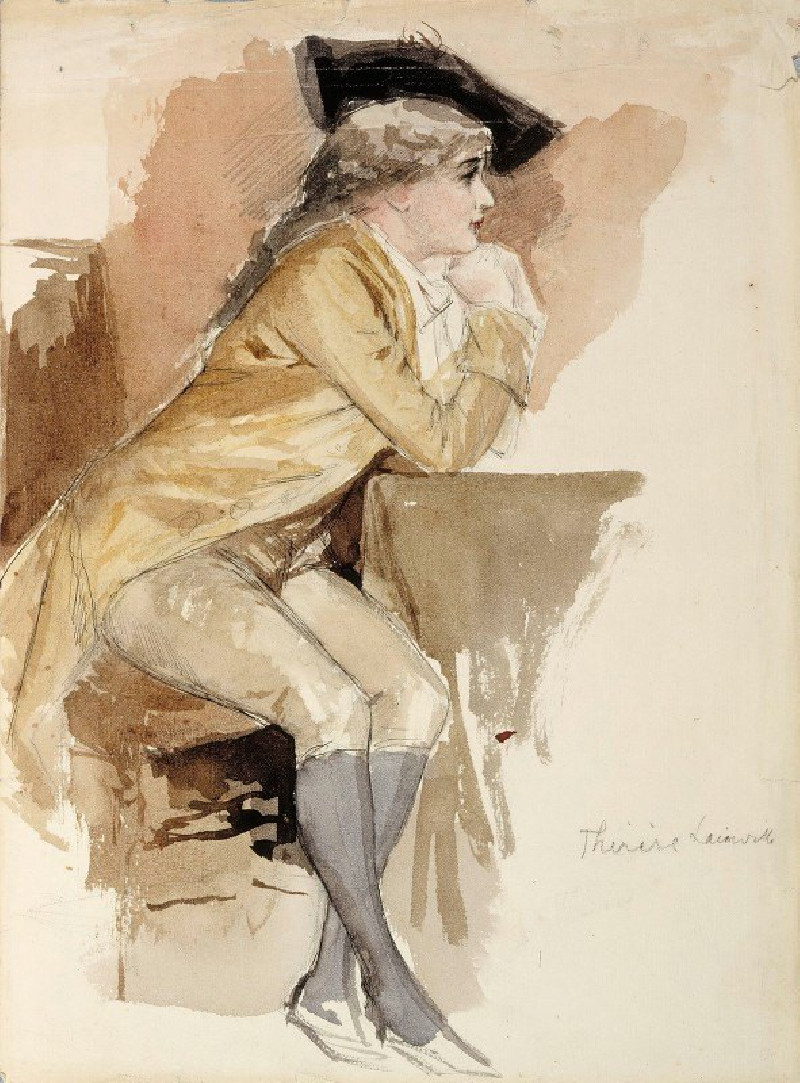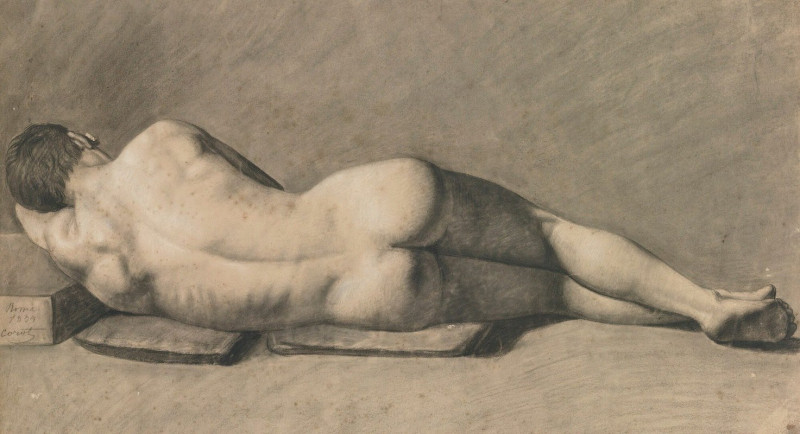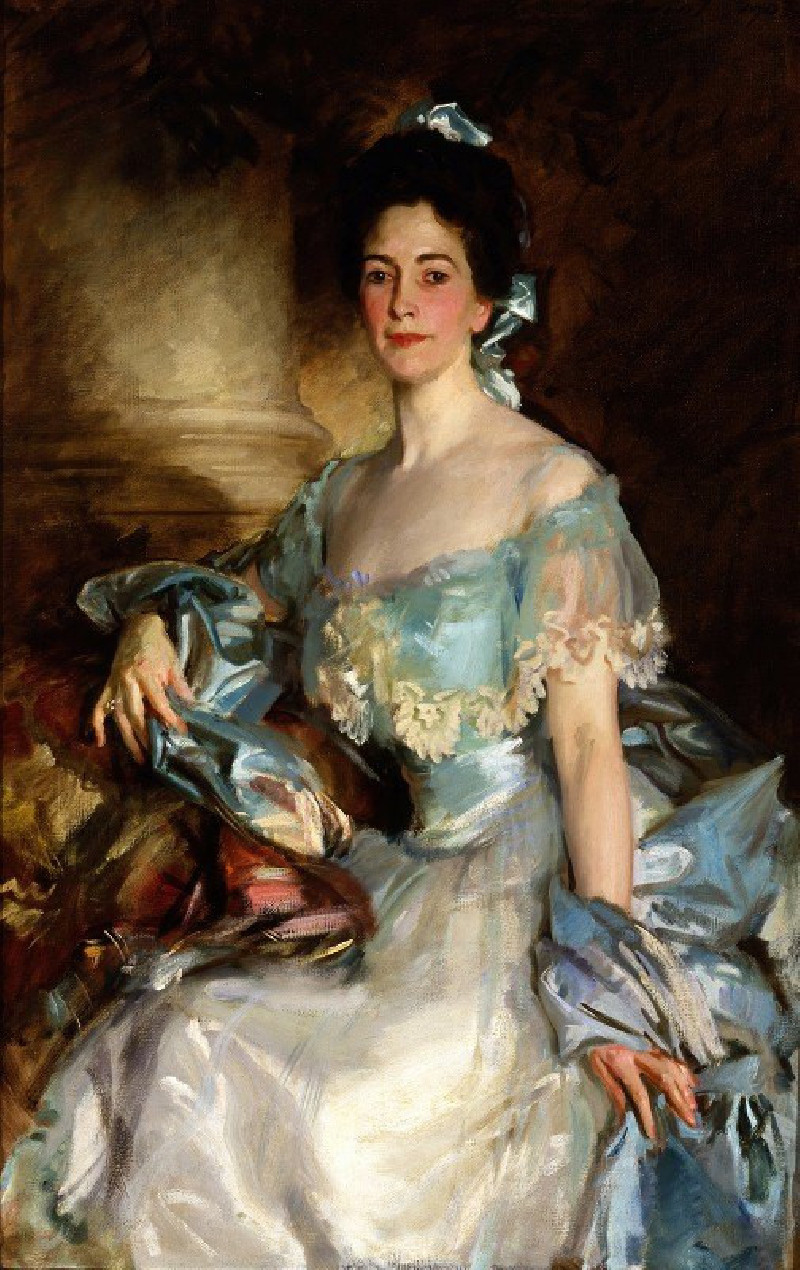Self-Portrait (1906)
Technique: Giclée quality print
Recommended by our customers
More about this artwork
Max Liebermann's "Self-Portrait" from 1906 offers a rare and intimate glimpse into the persona of one of the most influential figures in German modernist art. In this etching, Liebermann portrays himself with remarkable detail and emotional depth, revealing both his identity as an artist and the personal introspection of his late career stage.The portrait is striking for its directness and simplicity. Liebermann depicts himself seated, dressed in a formal suit, with his gaze confronting the viewer firmly and unflinchingly. The artist's face is rendered with bold, confident strokes, highlighting his prominent features such as his bald head, the meticulously groomed mustache, and deep-set eyes that suggest a blend of concentration and weariness. Throughout, the texture of his suit and the loose way it fits on his shoulders are captured with a casual drape, suggesting an air of relaxed authority.This work stands out as not just a technical achievement but as a psychological exploration. Through the medium of etching, Liebermann communicates a sense of immediacy and raw emotional honesty. The monochrome palette strips away any distraction caused by color, focusing the viewer’s attention solely on the subject’s expression and the stark contrasts of light and shadow."Self-Portrait" (1906) is not only a testament to Liebermann’s skill as a draftsman but also a poignant reflection on his own life, encapsulating a moment of self-reflection.
Delivery
Returns
Max Liebermann was a German painter and printmaker of Ashkenazi Jewish ancestry, and one of the leading proponents of Impressionism in Germany.
The son of a Jewish fabric manufacturer turned banker from Berlin, Liebermann grew up in an imposing town house alongside the Brandenburg Gate.
He first studied law and philosophy at the University of Berlin, but later studied painting and drawing in Weimar in 1869, in Paris in 1872, and in the Netherlands in 1876–77.

